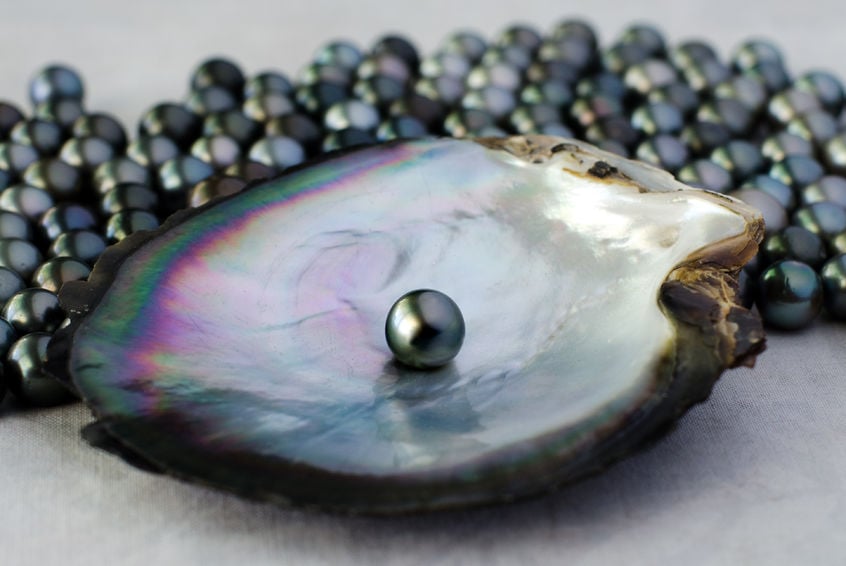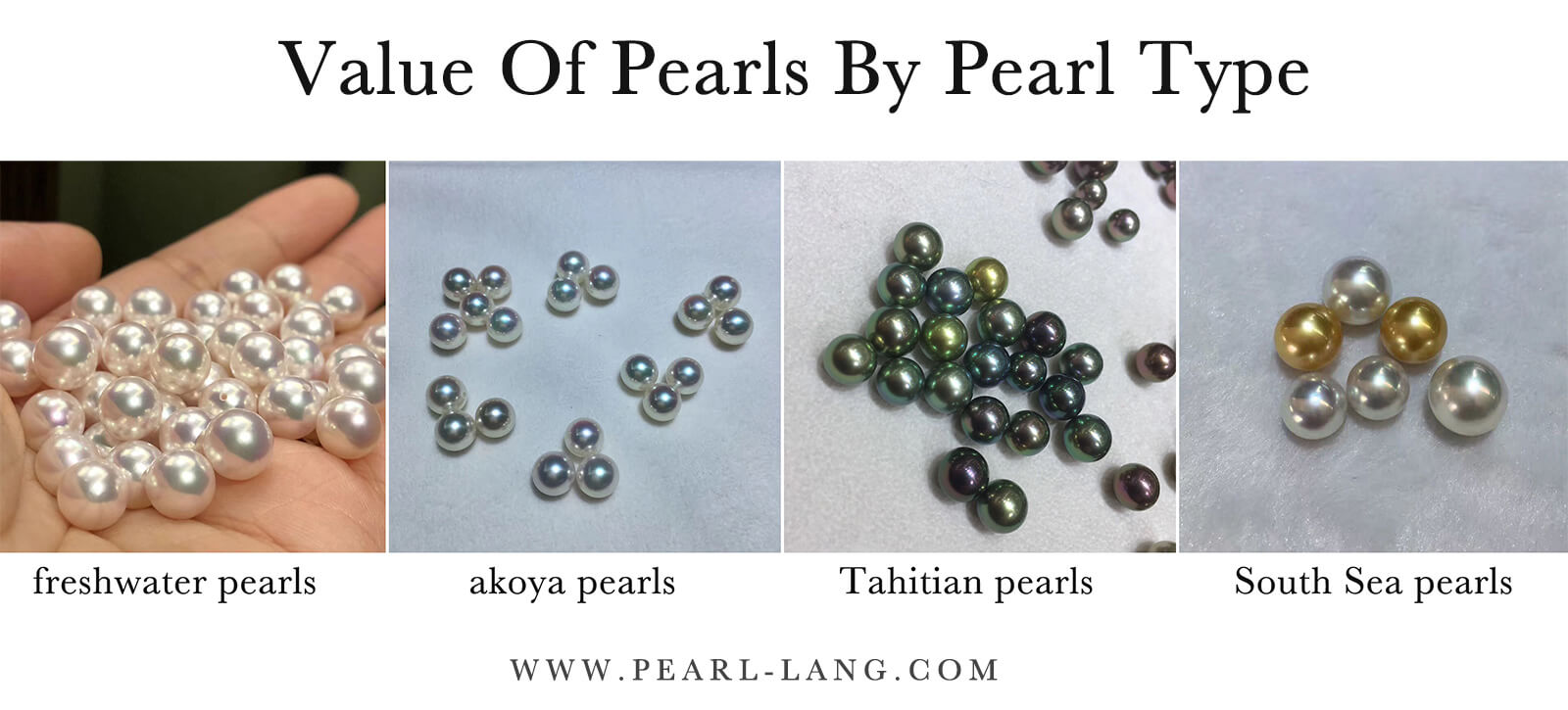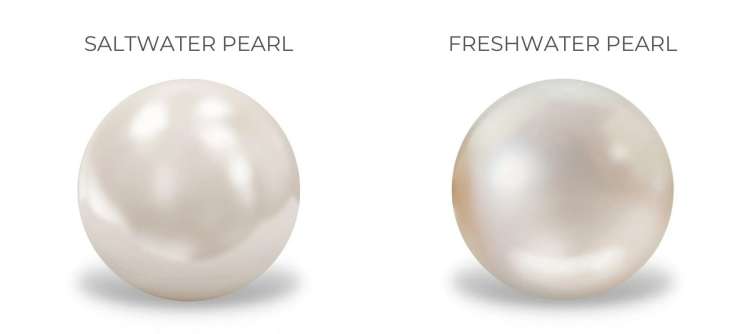How Much are Pearls Worth? Unveiling Their True Value

Pearls are valued based on size, shape, luster, and surface quality, ranging from $50 to $20,000. Are you curious about the worth of pearls?
Pearls are not only exquisite gems but also hold significant value in the jewelry industry. From classic white pearls to unique colored variations, these gems come in a range of sizes and shapes, each affecting their overall value. The luster and surface quality of pearls also play a crucial role in determining their worth.
Whether you’re looking to buy, sell, or simply appreciate the beauty of pearls, understanding their value can enhance your experience with these timeless treasures. Let’s dive deeper into the fascinating world of pearl valuation and discover what makes these gems truly priceless.
The Allure Of Pearls
Discover the captivating allure of pearls and their varying worth, influenced by factors like size, luster, and shape. The value of pearls can range from affordable to extravagant, making them a timeless and versatile investment in jewelry.
Historical Significance
Pearls have been treasured for centuries, with evidence of their use dating back to ancient times. In fact, they were so highly valued that Roman general Vitellius once financed an entire military campaign with just one of his mother’s pearl earrings. Throughout history, pearls have been associated with wealth, power, and status. They were often worn by royalty and nobility as a symbol of their social standing. The allure of pearls has withstood the test of time, and they continue to be sought after today.
Cultural Impact
Pearls have also had a significant impact on various cultures around the world. In Japan, pearls are considered a symbol of purity and are often given as a gift to young women on their coming-of-age day. In the Middle East, pearls are associated with perfection and are used to decorate everything from clothing to furniture. In some indigenous cultures, pearls are believed to have spiritual properties and are used in traditional healing practices. The cultural significance of pearls varies across different regions and religions, but their beauty and value are universally appreciated. When it comes to the worth of pearls, there are several factors that can influence their value. The size, shape, color, and luster of a pearl all play a role in determining its worth. In addition, pearls that are rare or difficult to find are typically more valuable than those that are more common. Ultimately, the worth of a pearl depends on a variety of factors and can range from a few dollars to millions of dollars. Pearls are truly one of nature’s most magnificent creations. Their timeless beauty, historical significance, and cultural impact have made them highly sought after by people all over the world. Whether you’re looking to add a touch of elegance to your wardrobe or invest in a valuable piece of jewelry, pearls are a classic choice that will never go out of style.

Credit: www.thepearlsource.com
Pearl Formation
Natural pearls form when an irritant enters an oyster. The worth of pearls varies depending on factors like size, shape, luster, and surface quality. High-quality pearls can fetch significant prices in the jewelry market.
Natural Vs. Cultured Pearls
Natural pearls are rare and expensive, and are formed in the wild without any human intervention. They occur when a foreign object such as a grain of sand or a parasite enters the mollusk’s shell and irritates the mantle tissue. The mollusk then secretes a substance called nacre, which coats the object layer upon layer, forming a pearl. Natural pearls come in various shapes, sizes, and colors, and their value is determined by their luster, surface quality, shape, size, and color. Cultured pearls, on the other hand, are produced through a process known as pearl farming. This involves inserting a small nucleus or bead into the mollusk’s mantle tissue, which then secretes nacre around the nucleus, resulting in the formation of a pearl. Cultured pearls can be produced in a variety of shapes, sizes, and colors, depending on the type of mollusk and the farming conditions. They are generally less expensive than natural pearls, but their value is still determined by their quality.
The Role Of Mollusks
Mollusks play a crucial role in pearl formation, as they are the organisms that produce them. There are two main types of mollusks that are used in pearl production: saltwater and freshwater. Saltwater mollusks such as oysters and mussels are the primary source of cultured pearls, while freshwater mollusks such as mussels and clams are used to produce freshwater pearls. The quality of the pearls produced by mollusks depends on various factors such as the type of mollusk, its age, size, and health, as well as the environmental conditions in which it lives. For example, saltwater pearls tend to have a higher luster and more consistent shape than freshwater pearls, while freshwater pearls can come in a wider range of colors and shapes. In conclusion, pearl formation is a fascinating process that involves the intricate interplay between mollusks and their environment. Whether natural or cultured, pearls are valued for their beauty, rarity, and symbolism, and continue to be a popular choice for jewelry and other decorative items.
Types Of Pearls
Pearls are timeless and elegant gems that have captivated people for centuries. They come in various types, each with its own unique characteristics and value. Understanding the different types of pearls can help you make an informed decision when purchasing or investing in these exquisite gems.
Freshwater Vs. Saltwater
One way to categorize pearls is based on their origin, whether they are freshwater or saltwater pearls.
Freshwater Pearls
Freshwater pearls are formed in freshwater mussels, primarily in rivers and lakes. They are known for their natural colors, including white, pink, lavender, and peach. These pearls are generally more affordable compared to saltwater pearls, making them a popular choice for those seeking elegance on a budget.
Freshwater pearls are typically irregularly shaped and may have slight surface imperfections. However, their unique baroque shapes add character and charm to jewelry designs. Due to their abundance and versatility, freshwater pearls are widely used in both classic and contemporary jewelry pieces.
Saltwater Pearls
Saltwater pearls, on the other hand, are formed in oysters that live in saltwater environments such as oceans and seas. These pearls are often associated with luxury and are highly valued for their luster and rarity.
There are several notable varieties of saltwater pearls:
- Akoya Pearls
- Tahitian Pearls
- South Sea Pearls
Akoya pearls are renowned for their brilliant luster and are primarily sourced from Japan. These pearls are typically white or cream-colored and are commonly used in traditional pearl strands and classic jewelry designs.
Tahitian pearls, also known as black pearls, are treasured for their stunning array of colors, ranging from dark gray to peacock green. These pearls are predominantly cultivated in French Polynesia and are celebrated for their exotic beauty.
South Sea pearls are among the rarest and most valuable pearls in the world. They are produced by Pinctada maxima oysters, primarily in Australia, Indonesia, and the Philippines. These pearls exhibit a luxurious golden hue and are renowned for their large size and exceptional luster.
Whether you choose freshwater or saltwater pearls, each type holds its own allure and beauty. The choice ultimately depends on your personal preference, budget, and the specific style you desire.
Now that we’ve explored the different types of pearls, let’s delve deeper into the factors that determine their worth.

Credit: www.pearl-lang.com
Evaluating Pearls
When it comes to determining the value of pearls, several factors come into play. Evaluating pearls involves considering their size and shape, color and luster, and surface quality. Let’s delve into each of these factors to understand how they contribute to a pearl’s worth.
Size And Shape
The size and shape of a pearl are crucial aspects that affect its value. Pearls come in various sizes, ranging from as small as 1mm to as large as 20mm or more. Larger pearls are typically more valuable, especially if they are well-matched in size.
Additionally, the shape of a pearl can impact its worth. Round pearls are highly sought after and usually command higher prices. Other common shapes include oval, drop, button, and baroque. While irregularly shaped pearls are still valuable, their prices may be lower than those of perfectly round ones.
Color And Luster
The color and luster of a pearl play a significant role in determining its value. Pearls come in a wide array of colors, ranging from white and cream to pink, blue, and even black. In general, pearls with rare and vibrant colors are more valuable.
Luster refers to the shine and reflective quality of a pearl’s surface. High luster is highly desirable as it signifies a pearl’s quality and beauty. Pearls with a strong, mirror-like luster are considered more valuable.
Surface Quality
The surface quality of a pearl is another crucial factor in its evaluation. A pearl with a smooth, clean surface and minimal blemishes or imperfections is considered of higher quality and therefore more valuable.
Surface imperfections can include spots, bumps, cracks, or uneven textures. Pearls with few to no visible surface flaws are highly coveted and command higher prices in the market.
When evaluating pearls, it’s important to take into account all these factors to accurately determine their value. The combination of size, shape, color, luster, and surface quality contributes to the overall worth of a pearl and influences its desirability among buyers.
Factors Influencing Pearl Value
Pearls have been coveted for centuries for their exquisite beauty and rarity. The value of pearls is influenced by various factors, making them a sought-after gemstone in the jewelry industry. Understanding these factors is crucial for anyone interested in the world of pearls.
Rarity And Origin
The rarity and origin of a pearl play a significant role in determining its value. Natural pearls are extremely rare and highly valued due to their scarcity. Pearls that occur organically in the wild are considered more valuable than cultured pearls, which are created with human intervention. Additionally, pearls originating from certain regions, such as the Persian Gulf or the Sea of Cortez, are esteemed for their unique characteristics, further enhancing their worth.
Harvesting Practices
The methods used to harvest pearls can impact their value. Sustainable and ethical harvesting practices contribute to the desirability and value of pearls. Pearls obtained through responsible and eco-friendly techniques are often regarded as more valuable due to their ethical sourcing. Conversely, pearls derived from environmentally detrimental or exploitative practices may be perceived as less valuable in the market.

Credit: www.whitevictoria.com
Pearl Jewelry Market
The pearl jewelry market is a dynamic and thriving industry that caters to a wide range of consumers, from those seeking affordable elegance to individuals investing in high-end luxury items. Understanding the factors that influence the value of pearls in the market can provide valuable insight into the world of pearl jewelry.
Designer Brands
Designer brands play a significant role in the pearl jewelry market, with established names like Tiffany & Co., Mikimoto, and Cartier commanding premium prices for their exquisite pearl collections. The prestige associated with these brands contributes to the high demand and value of their pearl jewelry, making them highly sought after by discerning buyers.
Vintage And Antique Pearls
Vintage and antique pearls hold a distinct allure in the market, appealing to collectors and enthusiasts who value the history and craftsmanship of these unique pieces. The scarcity of authentic vintage pearls contributes to their exceptional worth, with each piece telling a story of bygone eras and traditional artistry.
Caring For Pearls
Pearls’ worth is determined by various factors, including size, shape, luster, surface quality, and color. Generally, larger, rounder, and more lustrous pearls command higher prices. Additionally, natural pearls are more valuable than cultured ones due to their rarity. Proper care ensures that pearls retain their value over time.
Maintenance And Storage
Pearls are delicate gems that require proper care and handling to maintain their luster.
Store pearls away from other jewelry to prevent scratches.
Wipe pearls with a soft cloth after wearing to remove oils and dirt.
Professional Cleaning
Seek professional cleaning for heavily soiled or damaged pearls.
Professionals use specialized techniques to restore pearls’ beauty.
Ensure cleaning is done by a reputable jeweler experienced in handling pearls.
Investing In Pearls
When considering investing in pearls, it’s essential to understand their long-term value and buying tips to make informed decisions.
Long-term Value
Pearls have timeless appeal due to their natural beauty and rarity, making them a valuable investment choice.
Buying Tips
- Purchase from reputable sellers to ensure authenticity.
- Consider quality over quantity to maximize investment potential.
- Look for luster and surface quality when selecting pearls.
Frequently Asked Questions
How Are Pearls Valued?
Pearls are valued based on their luster, surface quality, size, shape, color, and type. High-quality pearls with excellent luster and minimal blemishes command higher prices, while larger pearls and rare colors are also more valuable.
What Factors Determine Pearl Worth?
The value of a pearl is determined by its size, shape, color, luster, surface quality, and type. Larger, rounder, and unblemished pearls with high luster and rare colors are more valuable.
Are Natural Pearls More Valuable?
Natural pearls are generally more valuable than cultured pearls due to their rarity. Natural pearls are formed without human intervention, making them unique and highly sought after by collectors and connoisseurs.
Do Freshwater Pearls Have Value?
Freshwater pearls have value based on their luster, surface quality, size, shape, and color. High-quality freshwater pearls with excellent luster and minimal blemishes are valued for their beauty and affordability.
Conclusion
Determining the worth of pearls involves various factors such as their type, size, shape, color, luster, and overall quality. The value of pearls can vary significantly, ranging from a few dollars to thousands or even millions. It is essential to consider the market demand, the reputation of the seller, and the grading systems used in the industry.
By understanding these factors, you can make an informed decision when buying or selling pearls. Remember to seek expert advice and conduct thorough research to ensure you get the best value for your pearls.



